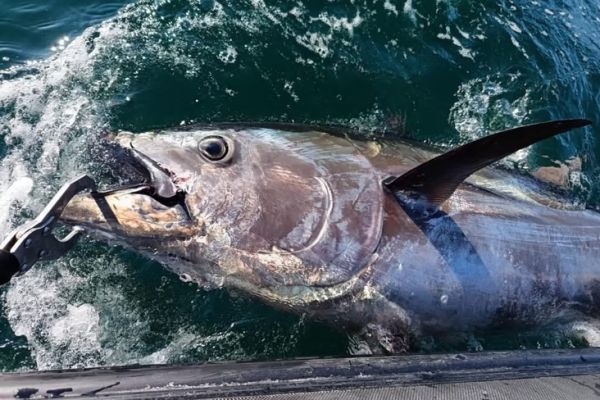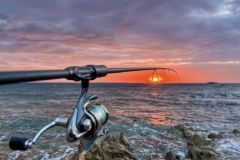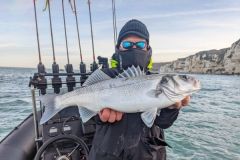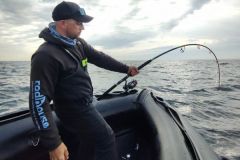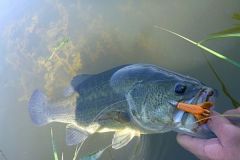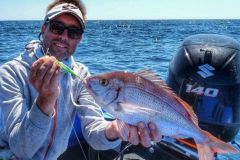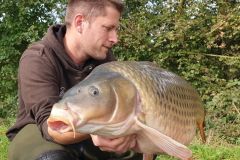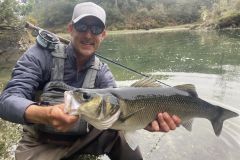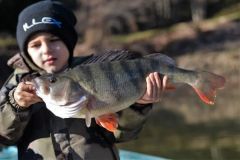How do you approach hunting?
At the risk of disappointing you, there's no one-size-fits-all approach to bluefin tuna hunting. Several parameters need to be taken into consideration:
the direction and intensity of the chase, but also the wind and sea state, which influence the approach, casting and animation of the lure, not forgetting the presence or absence of other boats in the area.
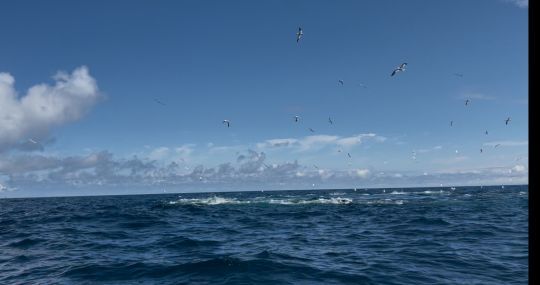
Generally speaking, I always try to position myself ahead of the hunt when it's on the move, with the wind at my back to encourage casting.
In the case of a very dense "jacuzzi", and if I'm the only one approaching it, I don't hesitate to position myself in the center of the hunt. Contrary to popular belief, this doesn't necessarily scare her away.
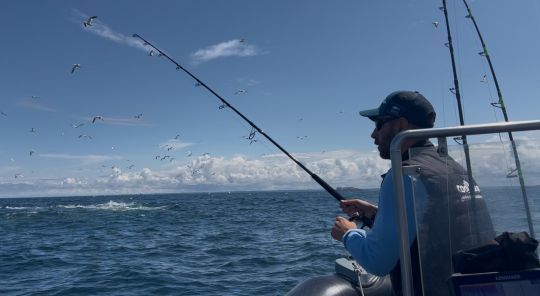
I opt for this technique after observing that, when hooking, tuna often tend to make their initial rush in the opposite direction to the hooking. This allows me to extract them quickly from the hunt, reducing the risk of breakage caused by another tuna hitting the braid.
Combat management
The first outing of the year is always special. It takes a little time to get used to your new habits and reflexes, but they're never far away.
Battle management is the key to success. Attacking a tuna is not the most complicated thing, getting it to the boat is quite another.
When it comes to fighting, there are several schools of thought: fighting forwards or backwards, forwards, backwards, or even standing still.

One thing is certain: the skipper's role is paramount. He must constantly maneuver to put the angler in the best possible position. He must anticipate the fish's movements to orient the boat properly, and avoid the angler ending up on one side of the boat and the fish on the other.
Personally, I opt for fighting on the rear or the front, but always with the clutch engaged. If the angler is in the bow, I clutch in reverse, and vice versa if he's fighting in the stern. In all cases, the end of the fight takes place at the rear of the boat, where there's the most space.
During fights, a second person stands by the angler in support, ready to intervene to help hold the rod if necessary.
Fish lineage
The fight ends with the lining stage, i.e. gripping the shock leader by the hand and grabbing the fish by the mouth with a fish grip. This stage is one of the most critical, as many breakages occur at this point.
Wearing thick gloves, a team member grabs the leader and hoists the fish to the surface. The mistake, a source of breakage, is to try to block the fish if it decides to make another rush.
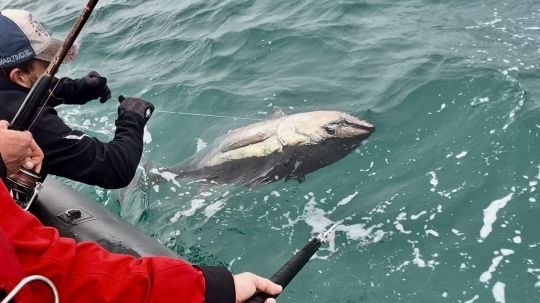
In practice, I try to get the fish to pierce the surface at least once before reeling. This breath of air calms the fish down a bit. As soon as the leader is seized, I release the reel brake and let a team member reel in the fish. A third person grabs the fish with a pair of pliers.
This action takes place with the engine engaged, which makes manoeuvring much easier.
Once the fish has been caught, you'll have plenty of time to unhook and oxygenate it before releasing it. And, of course, to immortalize the moment with a few photos.

Just remember that if you decide to take a fish out on board, it will probably be condemned and live release will be impossible. That's why I never take tuna out of the water, unless I decide to keep and band them.

 /
/ 